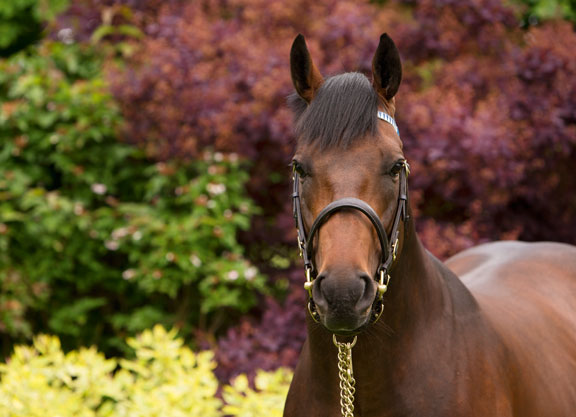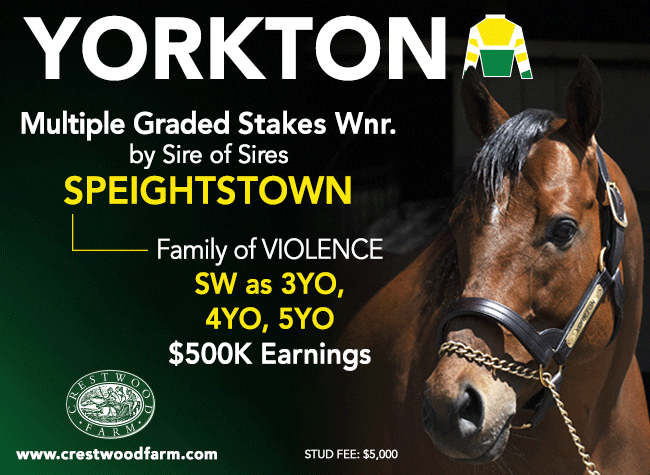By Kevin Blake
There is an old saying that goes “foals are for fools.” The suggestion being that assessing how a horse will look and perform later in life based on their appearance as a foal is a risky business, such is their relatively early stage of physical development at that point. Yet, that doesn't deter an army of pinhookers descending on the foal sales every November and December to try and find the foals that will yield lucrative profits for them when re-offered at the yearling sales under a year later.
One segment of the foal market that is always a hot topic of discussion at the sales is that of the first foals by new stallions. While it might seem counter-intuitive to concentrate on unproven stallions over proven stallions given the statistically low success rate of new sires, given the speed with which nomination fees rise after initial success of a sire's progeny on the racecourse, attempting to identify the next success story amongst the new stallions is a highly-popular pursuit in the bloodstock world. As well as that, those pinhookers that purchase foals from the first crop of new stallions consider themselves to be safer than most, as nothing can happen on the racecourse in between the time of their purchase to the time of their sale to devalue that sire's stock.
How the pinhookers and other buyers assessed the first foals of new sires is best judged on the foal sale results and information drawn from this data can be very useful for both breeders and traders moving forward. That said, analysing the results of foal sales is a tricky game, primarily due to sample size issues. This is particularly true in the case of the more expensive stallions; a general rule is that the higher the nomination fee, the fewer the foals by that sire that will be offered at the foal sales. However, such analysis can be informative in the case of sires who stand at the lower end of the nomination scale and are represented by a more significant samples of foals at the sales.
Following what was a particularly competitive and deep year for first-season sires in Great Britain and Ireland in 2013 (this year's 2-year-olds) with 13 of them having 75 or more foals on the ground, 2014 was a more typical year in quantity terms, with nine new sires having such first crop sizes. Five of those nine sires had 35 or more foals that changed hands at the foal sales.
As anyone that read my recent piece analysing stallions that are about to have their first runners in 2016 (click here) will know, I feel that when assessing the average and median sale price statistics of a stallion's progeny, it is important to add in the sire's nomination fee as well as fixed production costs into the equation. Using this method serves to level the playing field on which traditional average/median prices are skewed in favour of stallions that stood at the lower nomination fee scale.
As was the case with this methodology of analysing yearling sale results, calculating a fair figure for fixed costs incurred from the birth of the foal up until they sold at the foal sales is a next to impossible task. The costs involved for a hobby or small breeder that has an existing farm business without any staff other than themselves, foals their own mares and raises their foals on their own land are relatively small compared to those of a breeder whose mare and her progeny reside full-time at an expensive boarding stud. While I do not have statistics to confirm it, I suspect that a significant proportion of those that sell their horses as foals tend to be smaller breeders with existing farm businesses, so I am comfortable going with an average fixed cost figure that is towards the lower end of the expense ladder of 3,000 gns.
The following list is of the relevant numbers relating to every stallion based in Great Britain and Ireland that had 50 or more live foals based on the latest figures produced in the Return of Mares 2015. While these numbers are accurate up to the printing of the Supplement to Return To Mares 2015, some of the mares covered by the sires in questions have not had a return made by their breeder yet. There tends to be live foals amongst those no returns that have yet to be registered with Weatherbys, so it is reasonable to expect these live foal numbers to rise slightly between now and the yearling sales.
While it was not as pronounced as in the case of yearling sales last year, the weakness of the Euro against Sterling in the time from when stud fees were paid in 2014 (€1.24 to £1) to when the resulting foals were sold in late 2015 (€1.38 to £1) certainly favoured the British-based stallions on this list, which makes the fact that Irish-based stallions fared so well all the more impressive.
Click the table below to enlarge:
* Conversion rate of €1.24 to £1.00 used.
One sire that fared particularly well in terms of both their median (joint highest) and average (second highest) sales price as a multiple of their nomination fee plus fixed costs was Epaulette. Owned by Darley and currently based in Kildangan Stud in Kildare, his half-brother Helmet is also standing under the Darley banner and is about to have his first runners in 2016. Both of those siblings, as well as Sepoy–who came out very well in my analysis of the sires that will have their first runners in 2016–all share a similar profile in that they are owned by Darley, raced in Australia and were sprinters.
Darley have really weighed in behind Australian-trained sprinters following the success they enjoyed with the similarly-profiled Exceed And Excel, but Epaulette is slightly different in that he is by a sire in Commands that wouldn't be nearly as familiar to European-based breeders as the sires of the other aforementioned Australian imports. However, as is so often the case, holes that might have been picked in a stallion's profile at the time of their retirement to stud are soon forgotten if that sire throws good-looking stock, and the sales results achieved by Epaulette's first crop of foals certainly suggest that this is the case with him.
Considering his nomination fee is the eighth on this list of 11 and that he had the second-highest number of foals that sold, both the average and median sales prices that his foals generated were impressive. While his average was helped by John Ferguson going to €130,000 for one of his colts at Goffs, which was the highest price made by any of his first foals, that appears to be the only purchase by a buyer associated with Darley. Indeed, it is interesting that only one of Epaulette's first foals was bred by Darley. Mind, given the enthusiasm with which his first foals were greeted with at the sales, one suspects that he will receive more in-house support in 2016.
In my piece on stallions that are about to have their first runners in 2016, the risks and rewards of using such a stallion in the coming months were discussed. While using a sire in their third season after having the benefit of seeing the sire's first foals and how the market received them perhaps isn't quite as risky as using a sire in their fourth season, it is still a high-risk move. By the time a breeder that uses a sire in his third season sells the resulting progeny as a foal, the sire's first crop will have just had their first 2-year-old runners. Of course, if those runners have fared well, the breeder will have a very sought-after commodity on their hands, but in the more likely event that those runners haven't fared well, their foal will be a tough sell no matter how good looking they are.
For those that are inclined towards taking such a risk, Epaulette appeals as being the best option. His relatively low nomination fee of €7,000 this season keeps the breeder's exposure level low; he has the weight of numbers of progeny on the ground to give himself a chance of making a big impact with his first runners; and the positive reception that his first foals received at the sales can only be considered a significant positive.
Feedback: Kevin Blake at @kevinblake2011 (or [email protected]).
Not a subscriber? Click here to sign up for the daily PDF or alerts.








